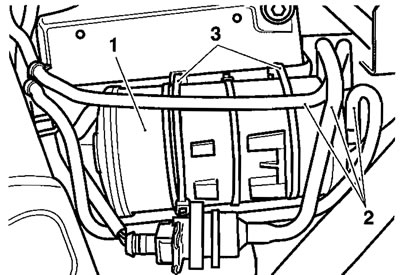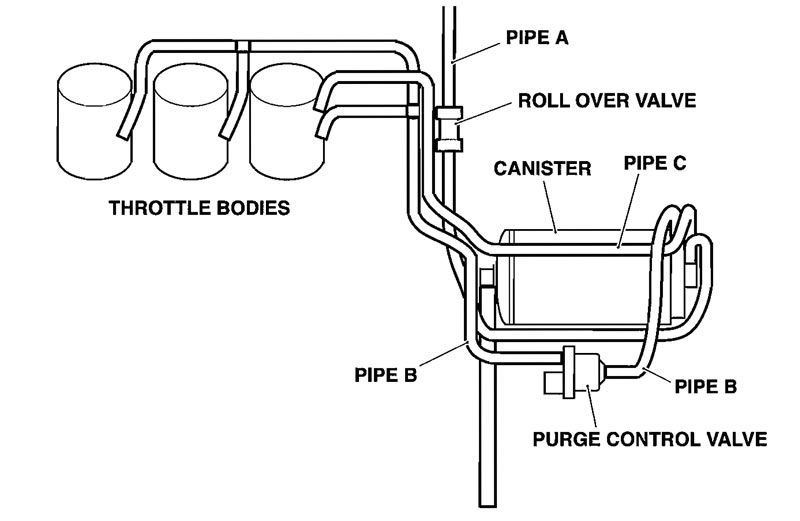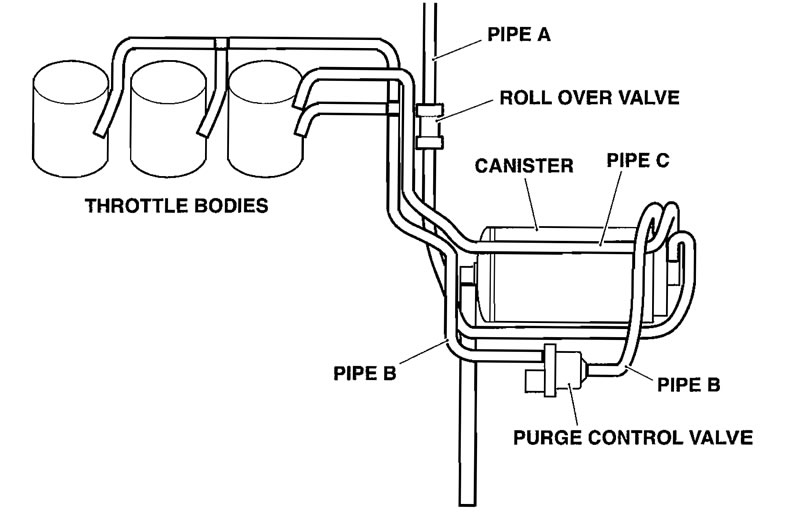A canister containing activated charcoal, located beneath the left hand side cover, absorbs hydrocarbon vapour given off by the fuel in the fuel tank. Vapour delivery to the canister occurs at all times, but is particularly high after riding, when the motorcycle is parked in direct sunlight or in high tempertures. This causes the fuel temperature in the fuel tank to rise, resulting in a rise in the vapour pressure inside the tank. Normally this vapour would be vented to atmosphere but on California models, it is stored in the charcoal canister.
When the engine is started, the vapour is returned to the throttle body by means of induction vacuum, and is burnt in the engine.
There are two distinct phases to the system's operation, engine off and engine running. These two conditions are explained overleaf.
Component locations (all situated behind the left hand side cover)

1. Carbon canister; 2. Purge valve; 3. Canister ties
Evaporative control system - engine off
When the engine is switched off, hydrocarbon fuel vapour passes down the breather pipe A, through the roll-over valve to the canister. Vapour is then stored in charcoal layers within the canister.

Evaporative control system - engine running
When the engine is started, vacuum from the engine is applied through pipe C to the vacuum switch on the canister, causing the canister return valve to open. Direct return of vapour, along pipe B, to the throttle bodies is prevented by the purge control valve which is governed by the engine management system. When open, the valve allows stored vapour to return to the throttle bodies where it enters the engine and is burnt in the cylinders.
The purge control valve is shuttled between the open and closed position during purging to prevent transient rich mixture and high emissions.

